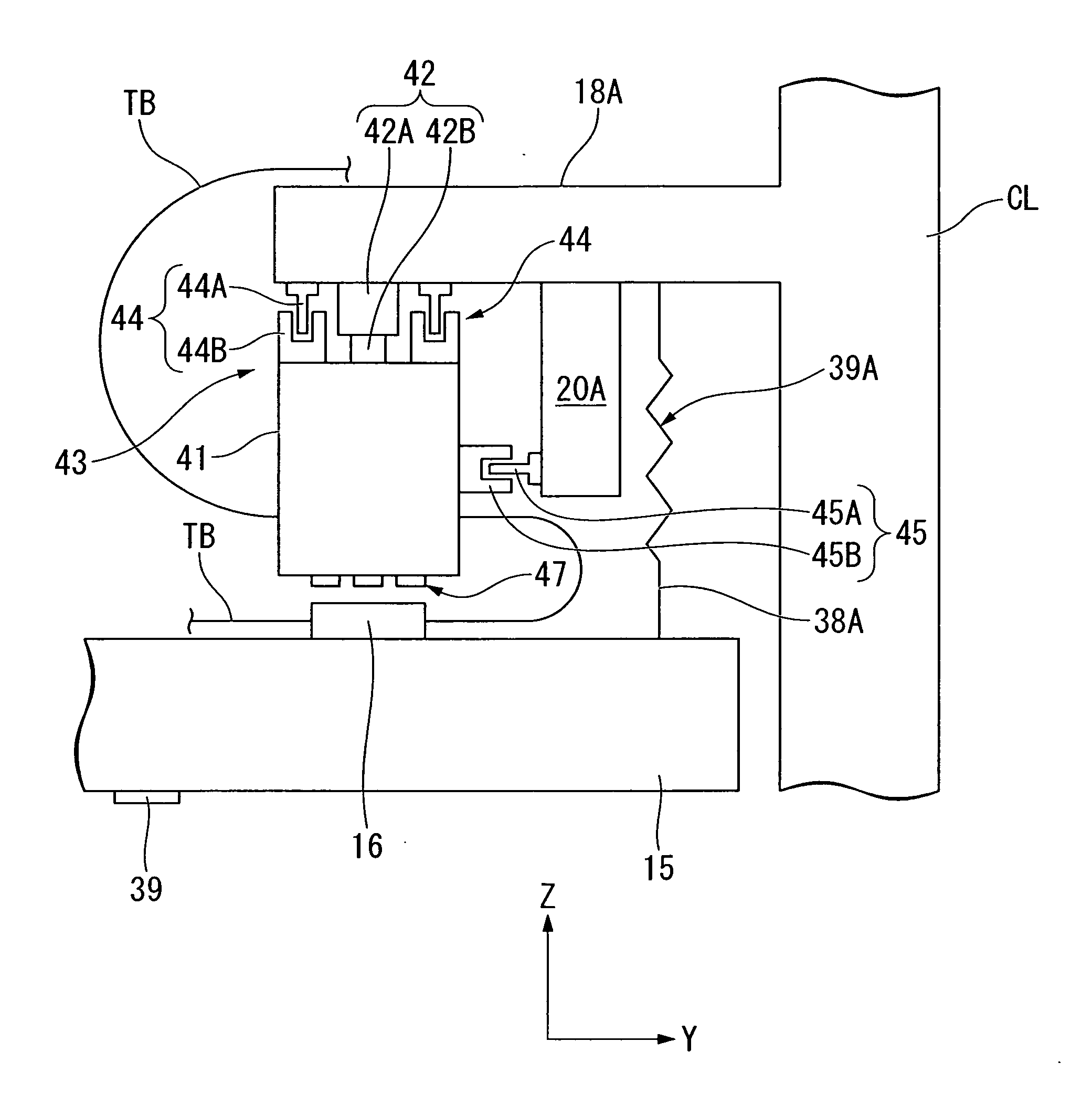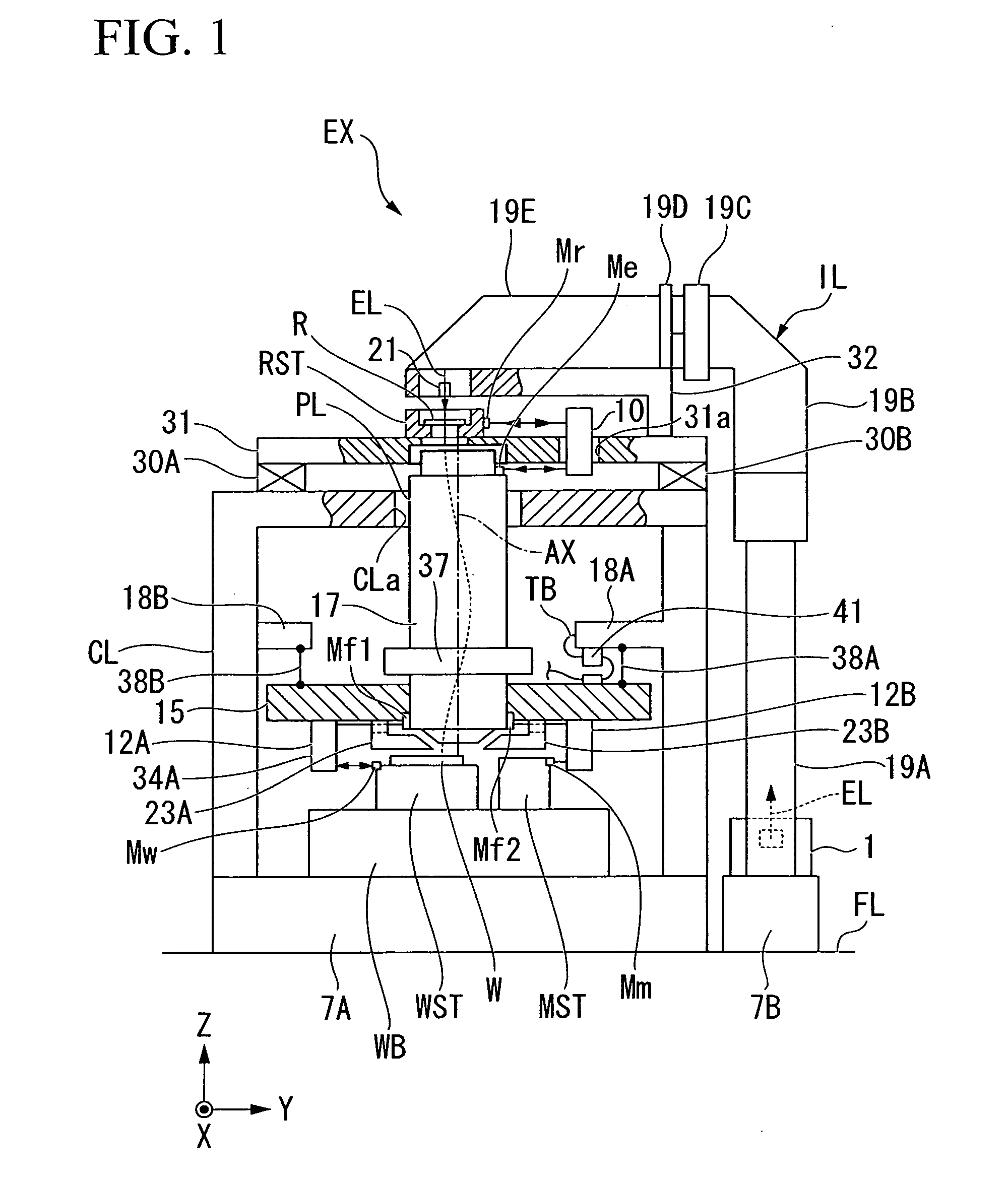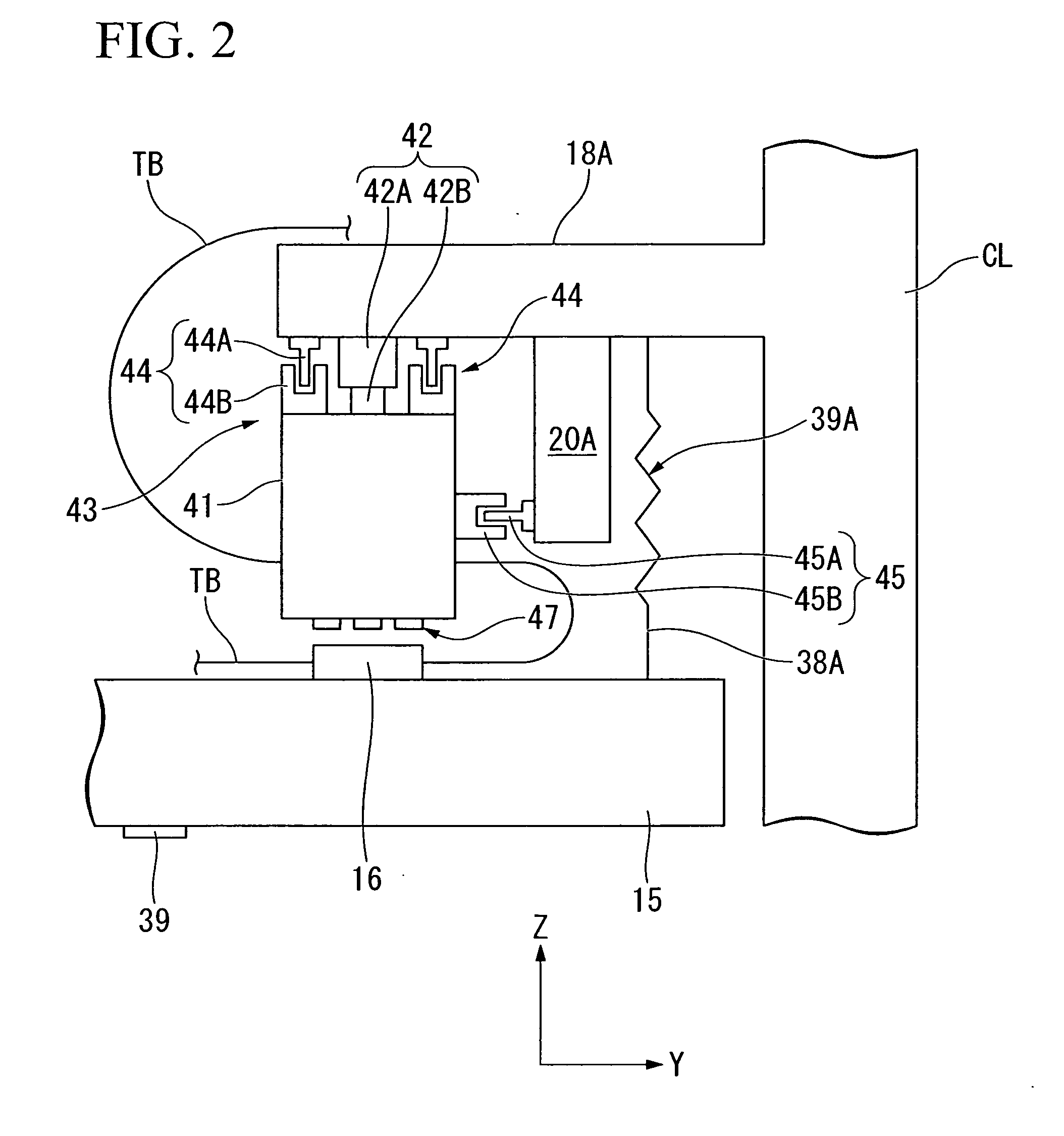Utilities supply member connection apparatus, stage apparatus, projection optical system support apparatus and exposure apparatus
- Summary
- Abstract
- Description
- Claims
- Application Information
AI Technical Summary
Benefits of technology
Problems solved by technology
Method used
Image
Examples
first embodiment
[0037]In the present embodiment, a description will be given regarding a utilities supply member connection apparatus relating to the present invention applied to a utilities supply member connected between a metrology frame, which supports a projection optical system in an exposure apparatus, and a main body column.
[0038]FIG. 1 is a drawing that shows the schematic configuration of an exposure apparatus EX relating to the first embodiment of the present invention.
[0039]The exposure apparatus EX shown in this drawing is a step-and-scan system scanning type exposure apparatus, specifically, a scanning stepper, that synchronously moves a reticle R and a wafer W in a one-dimensional direction while transferring a pattern formed on the reticle R onto the respective shot regions on the wafer W.
[0040]In the description below, if necessary, an XYZ rectangular coordinate system will be set up in the drawing, and the positional relationships of the respective members will be described while ...
second embodiment
[0070]Next, a second embodiment will be described while referring to FIG. 4.
[0071]Note that, in this figure, identical symbols are assigned to elements that are identical to the constituent elements of the first embodiment shown in FIG. 1 through FIG. 3, and descriptions thereof are omitted.
[0072]In the above first embodiment, the configuration was such that the utilities supply member TB was directly connected from the main body column CL to the holding member 41, but, in the present embodiment, a description will be given with respect to a configuration in which connection to the holding member 41 is performed via a mass apparatus.
[0073]As shown in FIG. 4, in the present embodiment, a mass apparatus MD is provided on frame 18A. This mass apparatus MD comprises an elastic body 51, which has low rigidity and is provided on frame 18A as the main body part, and a mass body 52 connected to frame 18A via the elastic body 51. The mass body 52 is connected to a utilities supply member TB ...
third embodiment
[0079]Next, a third embodiment will be described while referring to FIG. 5.
[0080]Note that, in this figure, identical symbols are assigned to elements that are identical to the constituent elements of the first embodiment shown in FIG. 1 through FIG. 3, and descriptions thereof are omitted.
[0081]In the above first embodiment, the configuration was such that the holding member 41 was supported by the dead load support part 42, but, in the present embodiment, an elastic member (in the present embodiment, a coil spring) 48 that has low rigidity is used as the support apparatus to support the holding member 41 to freely move with six degrees of freedom.
[0082]This coil spring 48 is such that one end is supported by frame 18A, and the other end is connected to the support member 41, and the rigidity (spring constant) is set so that it is possible to support the dead load of the holding member 41 and so that the characteristic frequency (frequency) of a vibration system formed by said coil...
PUM
 Login to View More
Login to View More Abstract
Description
Claims
Application Information
 Login to View More
Login to View More - R&D
- Intellectual Property
- Life Sciences
- Materials
- Tech Scout
- Unparalleled Data Quality
- Higher Quality Content
- 60% Fewer Hallucinations
Browse by: Latest US Patents, China's latest patents, Technical Efficacy Thesaurus, Application Domain, Technology Topic, Popular Technical Reports.
© 2025 PatSnap. All rights reserved.Legal|Privacy policy|Modern Slavery Act Transparency Statement|Sitemap|About US| Contact US: help@patsnap.com



